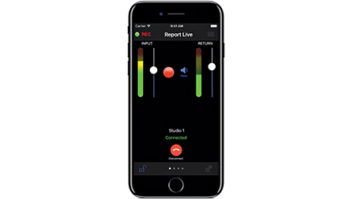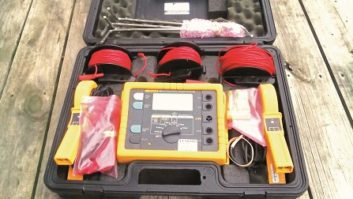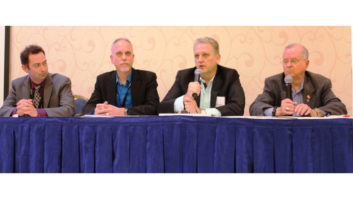Lightning Explained, Part 1
Jul 7, 2011 12:00 PM, By Amir Rizk
The scientific views expressed in this article are those of Dr. Farouk A.M. Rizk as explained by Amir Rizk. Dr. Farouk Rizk is the former VP (Research Laboratories), Hydro Quebec, and former Scientific Director at IREQ. Amir Rizk (B.Sc., phys, MBA) is VP of Lightning Electrotechnologies Inc and a student of Dr. Rizk. Any technical matters dealing with lightning protection adhered to previously published, peer reviewed material.
It is interesting to note that although lightning is perhaps the most complex electrical phenomenon that we face, the methods and tools commonly used in lightning protection are amongst the simplest and least scientific. Furthermore since the physics of the matter is so complex, it can be very difficult to distinguish between real science and the kind of baseless pseudo science that plagues the lightning protection industry.
In this three-part series I hope to provide a simplified yet modern account of what a lightning strike is, to provide an overview assessment of existing lightning protection practices and to introduce some new technologies based in the latest peer reviewed science.
What is a lightning strike?
First we need to familiarize ourselves with some basic facts and definitions.
A positive high voltage electric discharge from a positively charged electrode is a situation where the electric field at the surface of the electrode becomes so intense that it starts to rip electrons away from neutral air molecules and leaves behind positively charged ions referred to as positive “space charge”. Conversely, a negative electric discharge injects electrons into the air, which quickly attach to air molecules and form negative space charge. So in either case, it is a flow of electrons through the air, which produces space charge.
If enough charge is induced onto a grounded object, the resulting electric field around such a grounded object will appear very much like the electric field had it been isolated and maintained at high voltage. In such cases grounded objects will produce electric discharges that are virtually identical to the discharges produced by electrodes at high voltage.
In the earlier stages, these air-ionizing discharges are commonly referred to as “streamers”. Streamers are the bluish/white filament-like structures most commonly associated with HV electric discharges. They produce a distinctive audible noise, are fairly cool in temperature and produce current pulses in the micro- to milliamp range and require intense electric fields within which to propagate. Given the right conditions, streamers grow in groups or bunches, and a “leader” will develop at the base of a volume of streamers. Leaders are hot, highly conductive and can travel great distances in relatively low electric fields. Leaders move 10 to 100 times more slowly than streamers.
The stepped leader
For reasons that are beyond the scope of this article, during thunderstorms and as a result of certain types of cloud formations, massive localized volumes of charge develop in the clouds. These localized volumes of charge give rise to a high voltage electric discharge phenomenon known as stepped leaders.
— continued on page 2
Lightning Explained, Part 1
Jul 7, 2011 12:00 PM, By Amir Rizk
The leader moves in straight-line bursts or steps with lengths ranging from 30m to 100m. Within each step is an extraordinarily complex ballet of electrical activity that is only beginning to be understood. In recent years, high-speed photography of lightning has produced some spectacular images but the frame rates available are still too slow to capture these details. However, we believe the basic process can be described as follows.
Within each step, as the leader starts its forward momentum (assume negative polarity) it injects electrons ahead of its path through a large zone of streamers at its tip. These electrons quickly combine with air molecules and form negative ions (space charge). Since both the leader and the newly produced space charge are of the same polarity (negative in this case) the space charge opposes the leader’s forward propagation. The leader slows down and eventually comes to a complete stop, suspended in mid air. The flow of charges stops and the voltage at the leader tip increases during this stationary phase. Suddenly huge bursts of streamers reach out in a new direction, avoiding the negative space charge, which had previously stood in the leader’s path. The leader follows in the new direction and takes another step.
Sometimes, to avoid the space charge in its path, the leader will branch out in two different directions to go around the electrostatic obstacle in its way. These processes produce the zigzag patterns and branching that we see in the sky.
As the leader propagates it creates a sheath of negative space charge that can be traced all the way back to the localized volume of charge in the sky that created it and through all the various steps and branches that were taken. As the leader extends farther and father away from the source volume of charge, the peak voltages that appear at the leader tip decline and the steps become increasingly smaller and the leader moves increasingly more slowly, even as it approaches the ground.
It is widely thought that the negative stepped leader zig zags because it is attracted to rising pockets of positive space charge coming from the ground, but this fails to explain the fact that the same zig zag pattern is observed when the stepped leaders move in between the clouds. Furthermore we see the same types of tortuous patterns in all electric discharges in the lab: They’re never perfectly straight lines. The reasons for the more pronounced effect in lightning, is due to the sheer size of the charge volumes involved and the kind of voltage waveforms that result. But by using voltage rise times above the critical front for a particular laboratory gap, we can make leaders stop and start in the lab as well.
So once one of these stepped leaders is born, the parameters involved in dictating its path are complex and the particular path it takes will seem quite chaotic.
Lightning attachment
Lightning never actually comes down and touches any grounded object. Before that happens, the negative descending stepped lightning leader induces so much charge of opposite polarity that grounded objects launch positive upward leaders that rise up to meet the descending leader. It is like the most perfect missile guidance system. The trajectory of the positive upward connecting leader is powered and guided by its target, the charges sheathed around the negative descending stepped leader and those ahead of its tip.
Imagine a typical thunderstorm over an urban area populated by tall buildings with heights in the 60m range (20 stories). The cloud base is 2km above the ground, the electric field rises and falls as charges develop and discharge in the clouds. With a measured electric field of 10kV/m on the ground, a negative stepped leader is born and its trajectory is turning toward the earth. It is a comparatively small strike, of say a prospective return stroke current of only 12kA. An average value would be about 30kA and the most extreme, largest examples could be hundreds of kA.
— continued on page 3
Lightning Explained, Part 1
Jul 7, 2011 12:00 PM, By Amir Rizk
10ms before contact: The negative descending stepped leader breaks through the cloud base moving toward the earth at a speed of approximately 200km/s and its direct influence is just beginning to be felt in a fairly small zone on the ground below the leader.
2.5ms before contact: The descending leader is now only 500m above the ground. Building corners, edges and extended protruding objects like flagpoles and antennas begin to experience significant discharge activity. Some of these very same objects had periodically been producing electric discharges (St. Elmo’s fire, onset streamers in the centimeter range) under the ambient electric field that existed prior to the descending leader’s appearance. But now, this is a whole new level of activity, much more intense. The streamers are growing fast and in voluminous bunches.
1.5ms before contact: A number of positive upward leaders, forming from the various locations of intense streamer activity, rise up toward the descending leader tip. A race is on, only one of these upward leaders will connect with the descending negative leader. The stepping action, which characterized the descending leader”s motion, has now stopped and it moves along its own trajectory continuously.
0.5ms before contact: An upward connecting leader originating from the corner of a building some 60m in height will win the race. Beyond a critical length, the upward leader continuously accelerates and alters its trajectory to meet the negative descending leader tip. The streamer zone at the head of the upward leader tip grows longer as it approaches the negative descending leader. The upward leader has now grown to a length of 70m and is about to encounter the downward leader in a process that is termed “the final jump”. This will occur more than 100m above the ground and at a horizontal distance of 80m from the 60m high building that launched the upward connecting leader.
Right before contact, the descending leader may alter its path slightly toward the upward connecting leader. When the two leader tips are about 40m apart, the electric field between them reaches critical values that result in a very rapid breakdown of the air insulation, known as a streamer breakdown. The last 40m are spanned entirely by streamers, extending like tentacles from either leader tip toward the other.
The return stroke
At the instant that the final jump was completed, the localized volume of charge in the clouds that originally produced the negative descending stepped leader had a direct conducting connection to ground.
First the negative charges at the bottom of the descending leader move quickly through the zone of positive charge created by the upward connecting leader path. Then all the negative charges produced by the negative descending leader and which sheathed its path, suddenly begin to rush toward the earth, starting from the bottom up to the top, lighting up every branch and every aborted path. Like a column of ice that is suddenly melting from the bottom to the top, although all the water will fall to the earth, we would observe a “zone of melting” move upward. The remaining charges in the localized volume of charge in the clouds, which started this process, now flow to ground. This was the first return stroke and as per above, the peak current reached was 12kA, a value deemed sufficiently high to cause damage to buildings.
Any other nearby localized volumes of charge in the clouds now have a viable path to ground. As they pass through the conducting link provided by the attachment process, they create new current peaks referred to as subsequent return strokes. A typical lightning strike will produce three to five return strokes.
The channel temperature reaches 30,000 K. Huge bursts of electromagnetic waves radiate out from the leader channel. After the last return stroke passes, the process comes to an end and the conducting connection with the clouds is lost, the lightning strike is over. The entire process lasted some 200-300ms. The distinctive audible noise echoes for many kilometers.
— continued in Part 2
Lightning Explained, Part 2
Part two of this three-part series explains ways to protect systems from lightning damage….
Lightning Explained, Part 3
Part tree of this three-part series looks at currents methods of lightning protection….
References
1. NFPA International, Standards Council Decision (Long Form): D301-26
2. F.A.M. Rizk, “Modeling of Lightning Exposure of Buildings and Massive Structures” IEEE Trans. On Power Delivery, Vol. 24, No.4, pp. 1987-1998 October 2009
3. M.A. Uman and V.A. Rakov, “A Critical review of Nonconventional Approaches to Lightning Protection” American Meteorology Society, December, 2002
4. C.B. Moore, W. Rison, J. Mathis and G. Aulich, “Lightning rod improvement studies”, Journal of Applied Meteorology, Vol.39, pp.593-609, 2000
5. F.A.M. Rizk, “Modeling of Lightning Exposure of Sharp and Blunt Rods” IEEE Trans. On Power Delivery, Vol. 25, No.4, pp 3122 -3132, October, 2010
6. D. Mackerras, M. Darveniza, A.C. Liew, ” Review of claimed enhanced lightning protection of buildings by early streamer emission air terminals”, IEE Proc.-Sci Meas. Technol., Vol. 144, No. 1. January 1997
7. I.D. Chalmers FIEE, J.C. Evans and W.H. Siew MIEE, IEE Proc.-Sci Technol, Vol. 146, No. 2, March, 1999
8. N. Knudsen, F. Iliceto, “Flashover tests on large air gaps with dc voltages and with switching surges superimposed on dc voltage”, IEEE Trans., Vol. PAS-89, No.5/6, pp. 781-788, May/June 1970
9. F.A.M. Rizk, “Rocket-Triggered Lightning: Modeling of Trigger-Wire Corona Effects” International Conference on Lightning Protection, ICLP, Cagliari, Italy, September 2010
10. F.A.M. Rizk, “Modeling of lightning Incidence to tall structures.”, IEEE Trans., Vol. PWRD-9, pp. 162-171, Jan. 1994
11. US PATENT 1,266,175
12. F.A.M. Rizk, “Analysis of Space charge Generating Devices for Lightning Protection: Performance in Slow Varying Fields”, IEEE Trans. On Power Delivery, Vol. 25, No. 3, pp. 1996-2006, July 2010
13. F.A.M. Rizk, “Exposure of overhead conductors to direct lightning strikes: Modeling of positive streamer Inhibition”, IEEE Trans. on Power Delivery, Vol. 26, No. 2, pp. 1156 – 1165, April 2011









